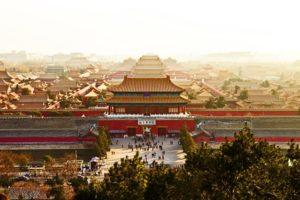Fodor's Expert Review Ancient Observatory
This squat tower of primitive stargazing equipment peeks out next to the elevated highways of the Second Ring Road. It dates to the time of Genghis Khan, who believed that his fortunes could be read in the stars. To China's imperial rulers, interpreting the heavens was key to holding onto power; a ruler knew when, say, an eclipse would occur, or he could predict the best time to plant crops. Celestial phenomena like eclipses and comets were believed to portend change; if left unheeded they might cost an emperor his legitimacy—his mandate of heaven. Records of celestial observations at or near this site go back more than 500 years, making this the longest documented astronomical viewing site in the world.
The main astronomical devices are arranged on the roof. Writhing bronze dragon sculptures adorn some of the astronomy pieces at Jianguo Tower, the main building that houses the observatory. Among the sculptures are an armillary sphere to pinpoint the position of... READ MORE
This squat tower of primitive stargazing equipment peeks out next to the elevated highways of the Second Ring Road. It dates to the time of Genghis Khan, who believed that his fortunes could be read in the stars. To China's imperial rulers, interpreting the heavens was key to holding onto power; a ruler knew when, say, an eclipse would occur, or he could predict the best time to plant crops. Celestial phenomena like eclipses and comets were believed to portend change; if left unheeded they might cost an emperor his legitimacy—his mandate of heaven. Records of celestial observations at or near this site go back more than 500 years, making this the longest documented astronomical viewing site in the world.
The main astronomical devices are arranged on the roof. Writhing bronze dragon sculptures adorn some of the astronomy pieces at Jianguo Tower, the main building that houses the observatory. Among the sculptures are an armillary sphere to pinpoint the position of heavenly bodies and a sextant to measure angular distances between stars, along with a celestial globe. Inside, the dusty exhibition rooms shelter ancient star maps with information dating back to the Tang Dynasty. Most of the ancient instruments were looted by the Allied Forces in 1900, during the Boxer Rebellion, only to be returned to China at the end of World War I.
READ LESS







